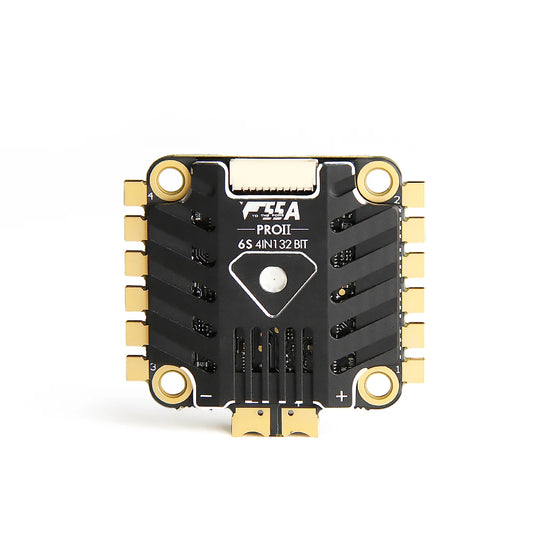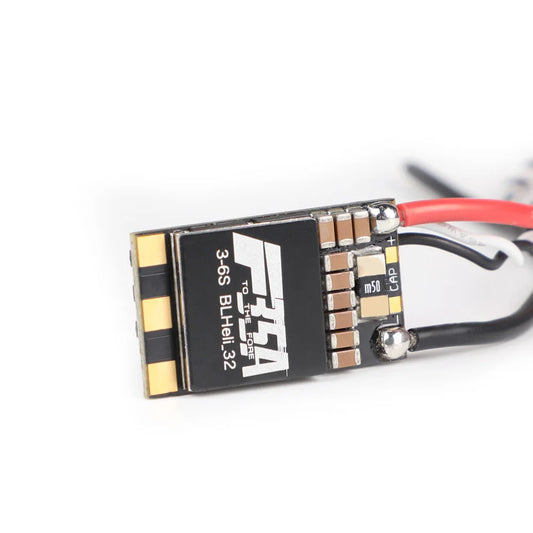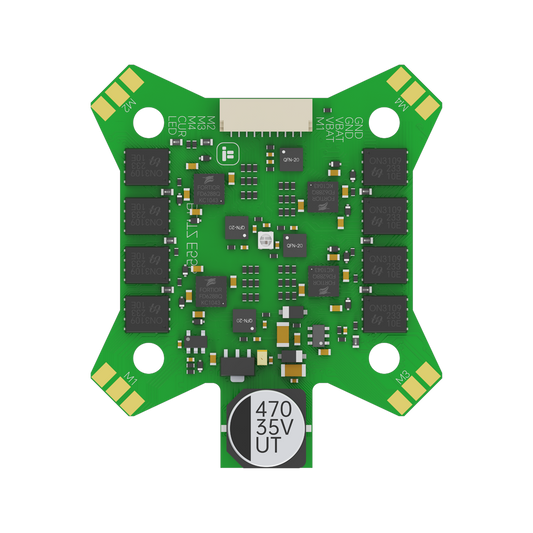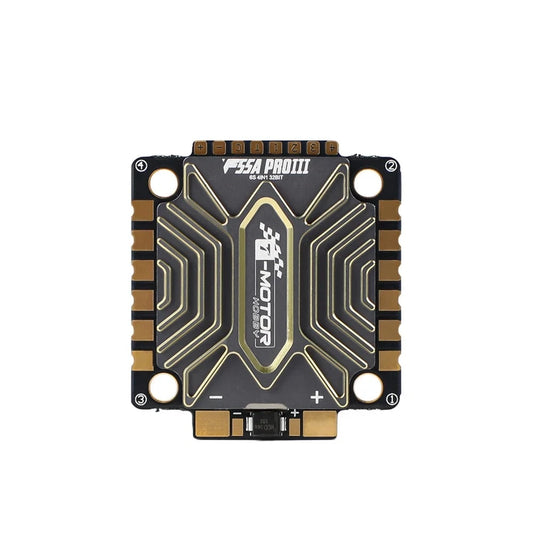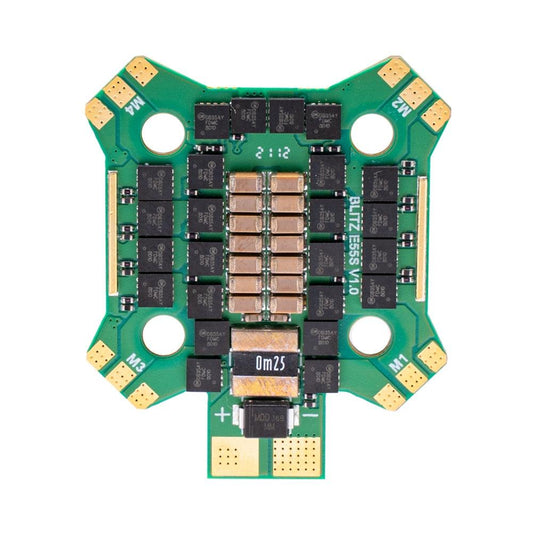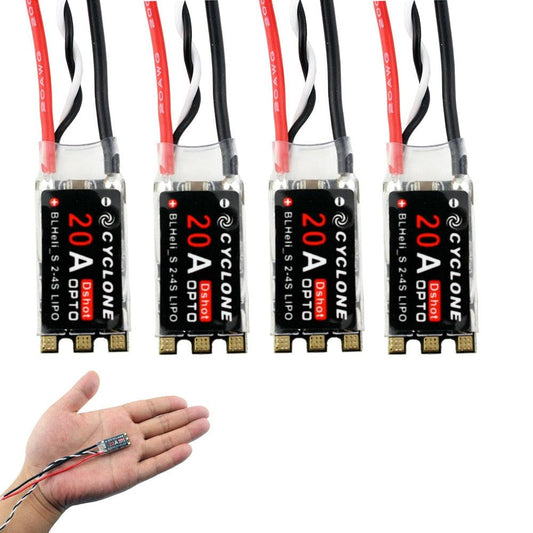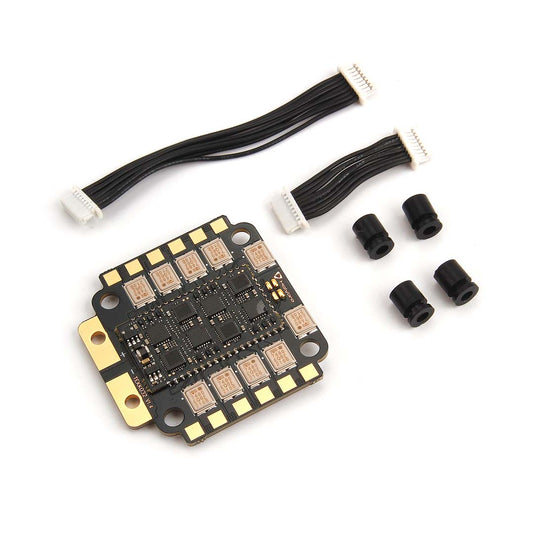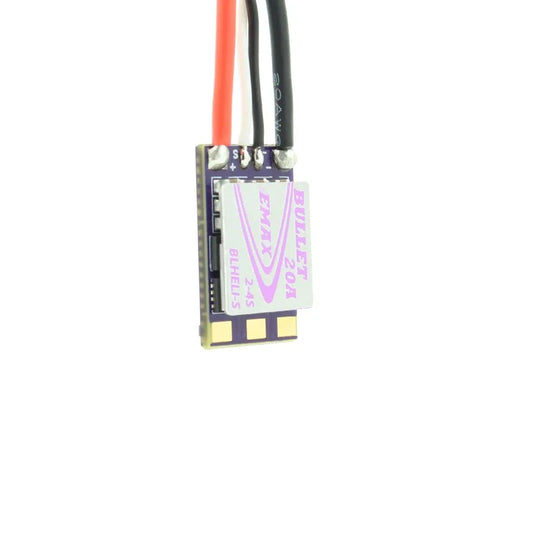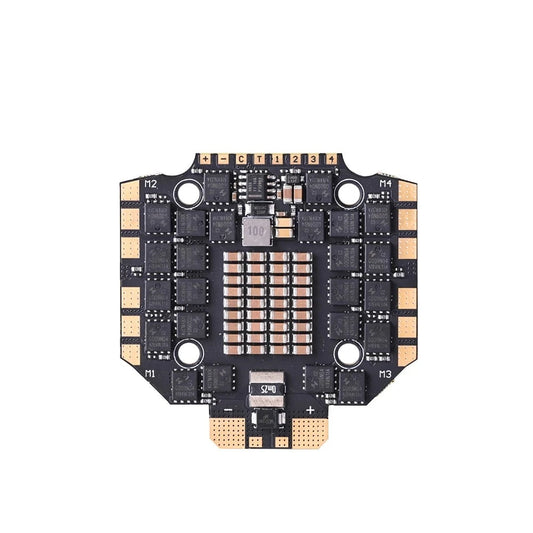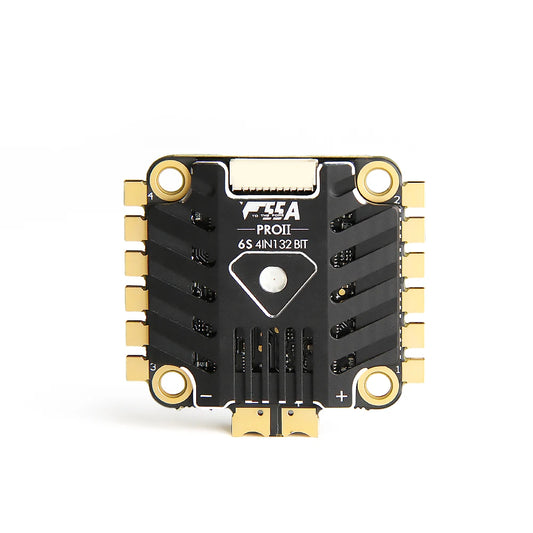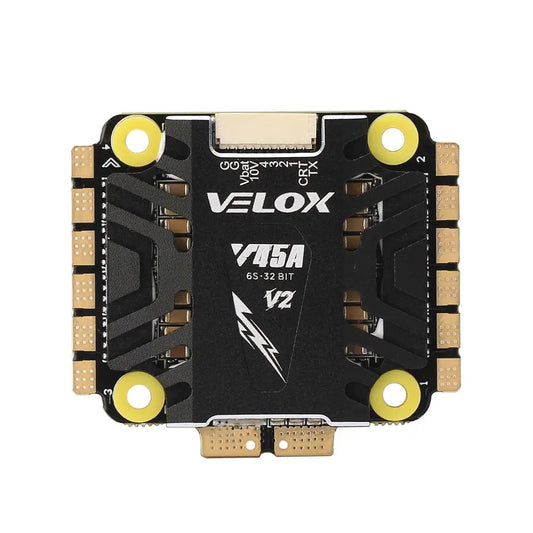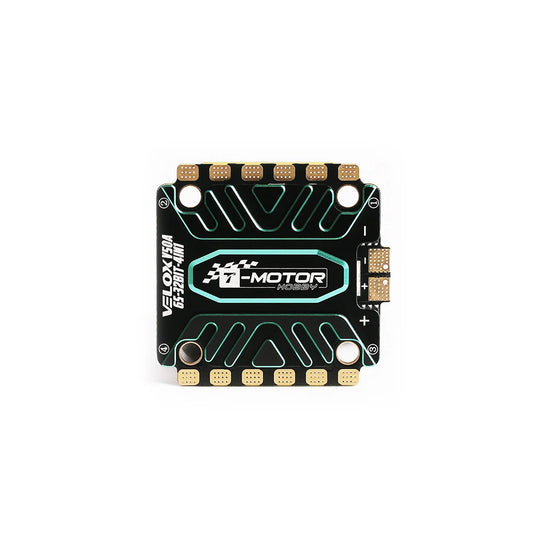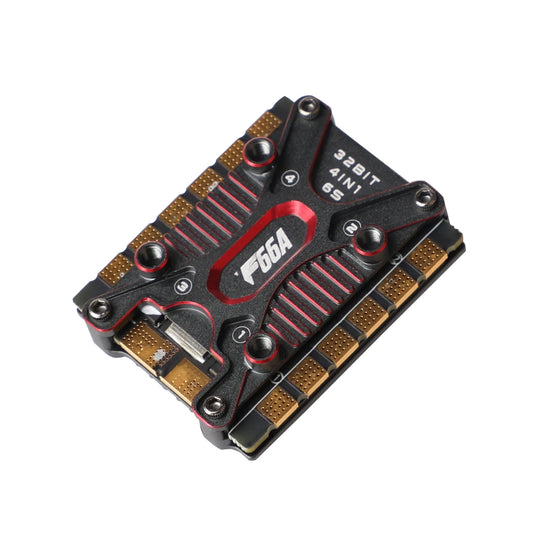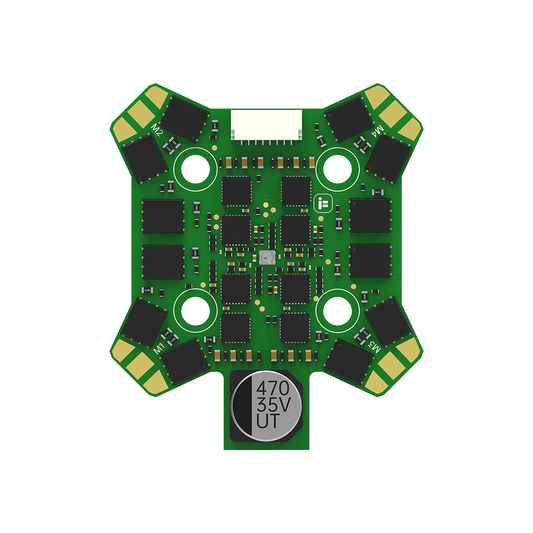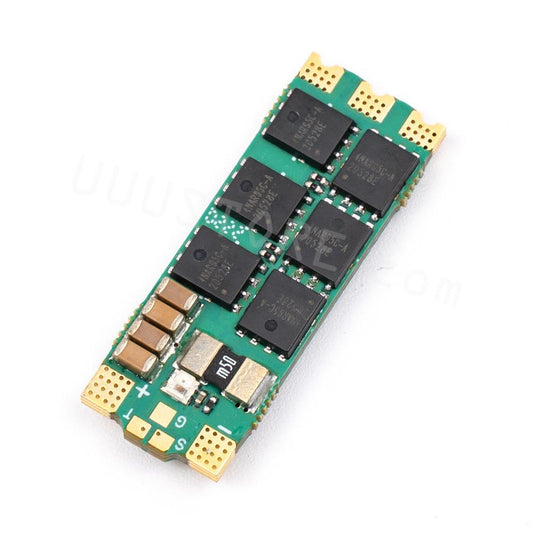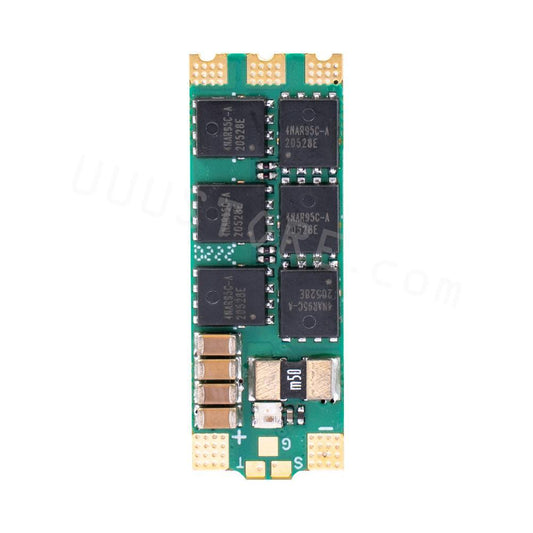-
SpeedyBee BLS 60A 30x30 4-in-1 ESC
Regular price $59.00 USDRegular priceUnit price per -
SpeedyBee F7 V3 BL32 50A 4-in-1 ESC
Regular price $65.00 USDRegular priceUnit price per -
SpeedyBee F405 BLS 50A 30x30 4-in-1 ESC
Regular price $51.00 USDRegular priceUnit price per -
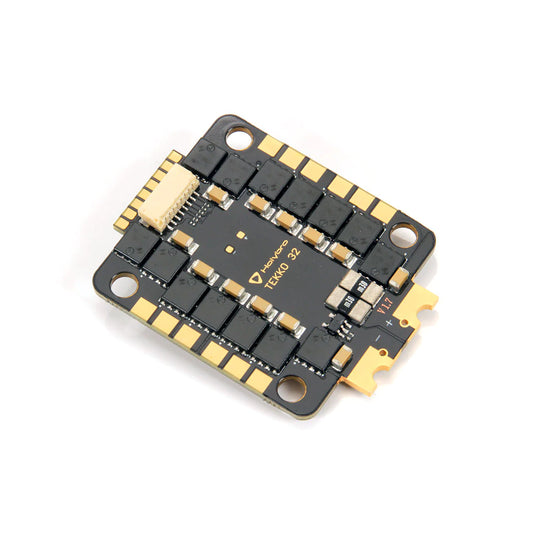 Sold out
Sold outHolybro Tekko32 F4 4in1 50A ESC
Regular price $85.00 USDRegular priceUnit price per -
T-MOTOR F55A PRO II 4IN1 32bits ESC - with LED for DIY racing Drone Traversing FPV RC 5V@ 2A
Regular price $118.38 USDRegular priceUnit price per -
Axisflying 80A F405 / F722 STACK 4IN1 ESC for 13inch FPV Drone 6-8S Input
Regular price From $105.00 USDRegular priceUnit price per -
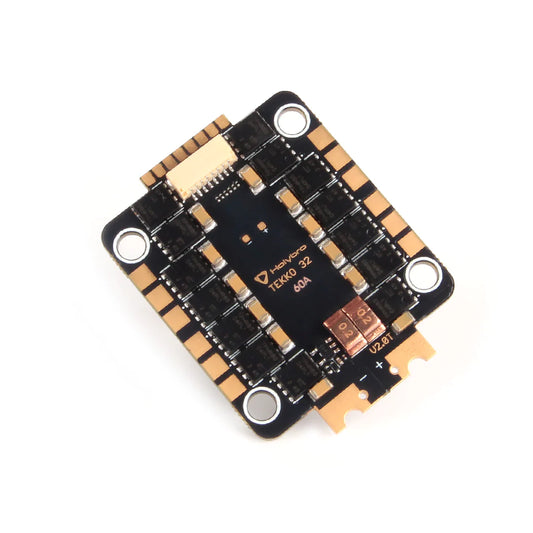 Sold out
Sold outHolybro Tekko32 F4 4in1 60A ESC
Regular price $100.00 USDRegular priceUnit price per -
EMAX BLHeli Series 6A 12A 20A 30A 40A 50A 60A 80A ESC Speed Controller for Multicopter Qudcopter Airplane Drone Helicopter
Regular price From $14.69 USDRegular priceUnit price per -
T-motor F3P BPP-4D 16A ESC - FPV Electronic Speed Control For Free Style Drone Motor
Regular price $33.99 USDRegular priceUnit price per -
T-MOTOR F35A ESC - 3-6S 32Bit High Quality Speed Controller for RC FPV Plane
Regular price $39.87 USDRegular priceUnit price per -
iFlight BLITZ E55S 4-IN-1 ESC
Regular price $54.00 USDRegular priceUnit price per -
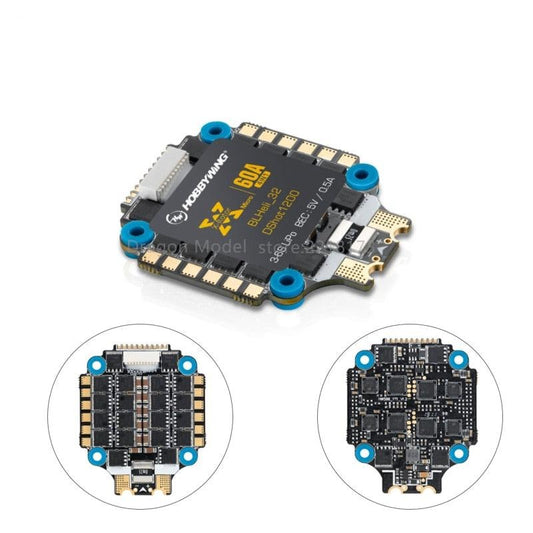
Hobbywing XRotor Micro 60A 4in1 BLHeli-32 DShot1200 3-6S ESC for FPV Racing drone Quadcopter
Regular price $89.57 USDRegular priceUnit price per -
MAD AM32 50A 2-8S 8-in-1 Drone ESC
Regular price $179.00 USDRegular priceUnit price per -
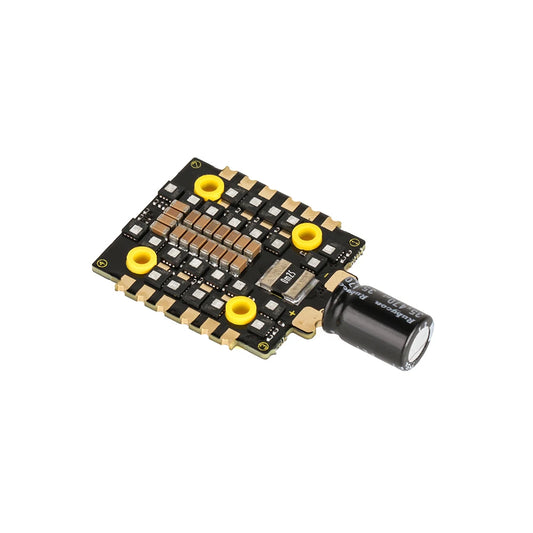
T-motor MINI F45A 6S 4 IN1 32 BIT 3-6S ESC - Electronic speed controller For FPV RC Drone Racing
Regular price $104.68 USDRegular priceUnit price per -
T-MOTOR F55APROIII F55A PROIII 4IN1 ESC - STM32G071 Support wide PWM frequency
Regular price $144.38 USDRegular priceUnit price per -
iFlight BLITZ Mini E55S 4-IN-1 2-6S ESC Supports DShot DShot150/300/600/MultiShot/OneShot for FPV part
Regular price $85.24 USDRegular priceUnit price per -
MAD BLHeli-32 70A 4IN1 12S Drone ESC
Regular price $239.00 USDRegular priceUnit price per -
BLHeli Cyclone 20A BLHeli_S ESC DSHOT 20A ESC BLHeli S Speed Controller 2-4S for FPV Raing Drone Quadcopter 210 Frame
Regular price From $13.14 USDRegular priceUnit price per -
Holybro Tekko32 F4 Metal 4in1 65A ESC - BLHELI32 / PWM output 128K / 4~6S 30.5x30.5mm For FPV Racing Drone
Regular price $106.38 USDRegular priceUnit price per -
EMAX D-SHOT Bullet Series 20A 2-4S BLHELI_S ESC - 3.5g Support Onshot42 Multishot
Regular price $20.76 USDRegular priceUnit price per -
T-MOTOR C 80A C80A 4IN1 ESC 4-8S Blheli32 Dual Mosfets
Regular price $355.36 USDRegular priceUnit price per -
MAD AM32 70A 3-12S 4-in-1 Drone ESC
Regular price $199.00 USDRegular priceUnit price per -
MAD AM32 3-8S 80A 4-in-1 Drone ESC
Regular price $179.00 USDRegular priceUnit price per -
MAD AM32 70A 3-8S 4in1 Drone ESC
Regular price $169.00 USDRegular priceUnit price per -
MAD BL-32 60A 6S 4IN1 64Mhz Drone ESC
Regular price $139.00 USDRegular priceUnit price per -
Foxeer Mini Reaper 128K 45A BL32 4in1 ESC 20*20 M3 STM32
Regular price $143.00 USDRegular priceUnit price per -
Foxeer Reaper F4 Slim Mini ESC 128K 60A BL32 4in1 9~40V 20mm M3
Regular price $105.00 USDRegular priceUnit price per -
Foxeer Reaper 80A F4 128K BL32 4-8S Single ESC
Regular price $78.00 USDRegular priceUnit price per -
T-Motor F55A PROⅡ 6S 4IN1 LED 32bit ESC - Electrical Speed Control For FPV motors RC Racing Drone
Regular price $126.01 USDRegular priceUnit price per -
T-motor V45A V2 6S 4IN1 32BIT ESC - Electronic Speed Control For FPV RC Racing Drone Motor
Regular price $75.83 USDRegular priceUnit price per -
T-motor V50A 6S 4IN1 32BIT ESC - Electronic Speed Control For FPV RC Racing Drone Motor
Regular price $78.21 USDRegular priceUnit price per -
T-MOTOR F66A MINI 6S 4IN1 F Series ESC No Through Hole
Regular price $168.35 USDRegular priceUnit price per -
iFlight BLITZ E55R 4-IN-1 ESC
Regular price $90.00 USDRegular priceUnit price per -
iFlight BLITZ F7 Pro Combo Set with BLITZ E80 Single ESC for FPV
Regular price From $458.96 USDRegular priceUnit price per -
iFlight BLITZ E55 Single 55A 2-6S ESC - Support Dshot600 Proshot, Oneshot, Multishot for FPV Racing drone long range 35*13mm
Regular price From $43.37 USDRegular priceUnit price per -
iFlight BLITZ E55 Single 55A 2-6S ESC - Support Dshot600 Proshot, Oneshot, Multishot for FPV Racing drone long range 35*13mm
Regular price From $57.16 USDRegular priceUnit price per




